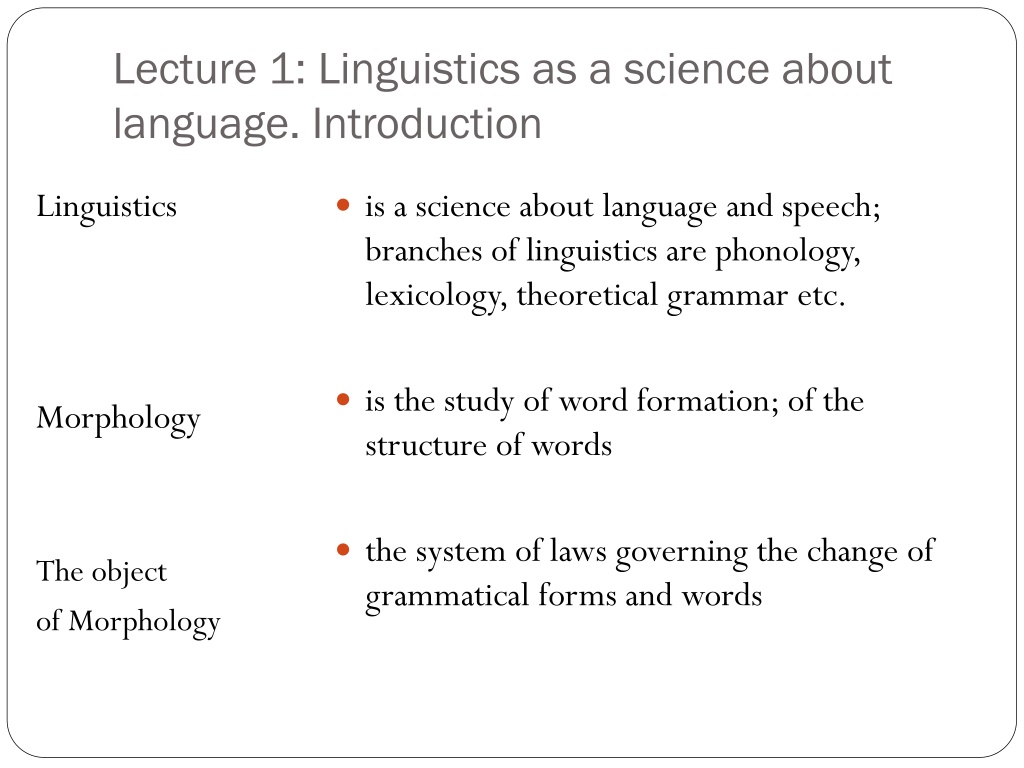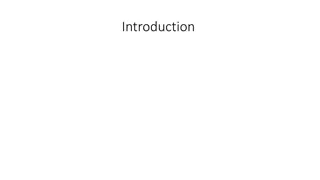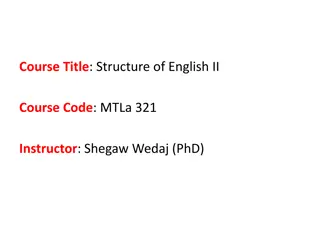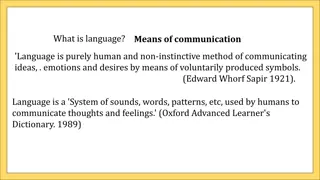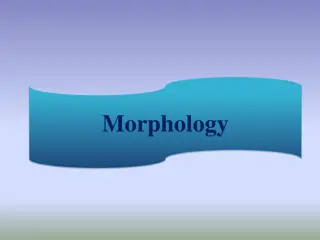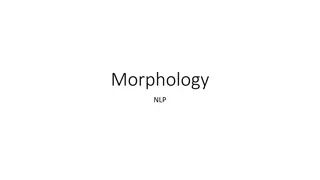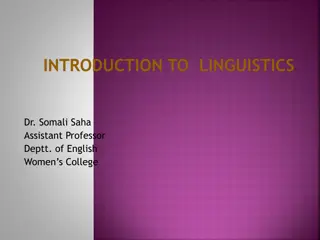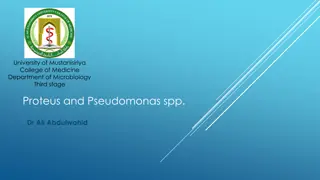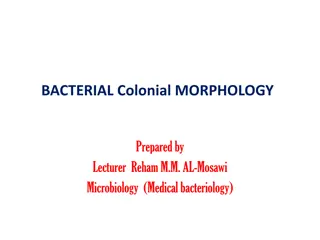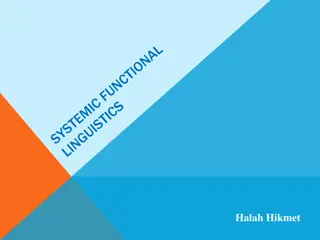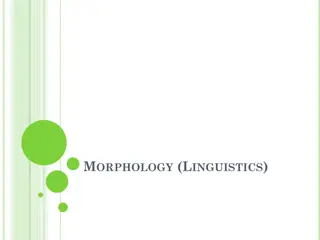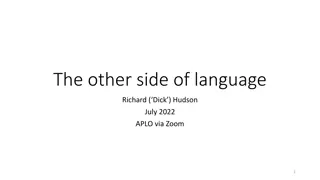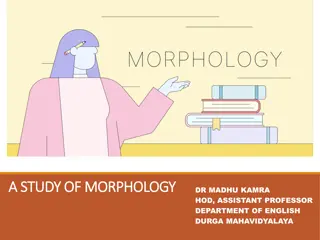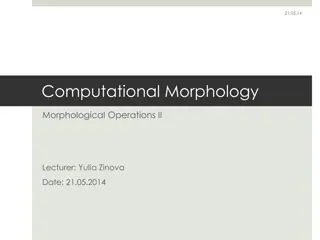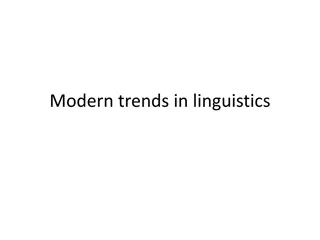Linguistics: Exploring Language Structure and Morphology
Linguistics is the scientific study of language and speech, encompassing branches like phonology, lexicology, and morphology. This field delves into the levels of language structure, such as phonological, morphological, lexical, syntactic, semantical, pragmatical, and stylistical. Scholars began investigating language systems in the 17th century, but it was Ferdinand de Saussure in the early 20th century who laid the foundations for a modern linguistic theory. Morphemes, the smallest meaningful units of word forms, are key elements in understanding word structure and meaning in language.
Download Presentation

Please find below an Image/Link to download the presentation.
The content on the website is provided AS IS for your information and personal use only. It may not be sold, licensed, or shared on other websites without obtaining consent from the author.If you encounter any issues during the download, it is possible that the publisher has removed the file from their server.
You are allowed to download the files provided on this website for personal or commercial use, subject to the condition that they are used lawfully. All files are the property of their respective owners.
The content on the website is provided AS IS for your information and personal use only. It may not be sold, licensed, or shared on other websites without obtaining consent from the author.
E N D
Presentation Transcript
Lecture 1: Linguistics as a science about language. Introduction Linguistics is a science about language and speech; branches of linguistics are phonology, lexicology, theoretical grammar etc. is the study of word formation; of the structure of words Morphology the system of laws governing the change of grammatical forms and words The object of Morphology
Levels of the language structure Phonological (phonetical appearance of language units) Morphological Lexical (words and word groups) Syntactic Semantical Pragmatical Stylistical .
Linguistic units are members of the language system, so they get into systematic relations naturally. The phonemic level is formed of phonemes. The phoneme has no meaning, its function is purely differential: it differentiates morphemes and words as material bodies. The morpheme is the elementary meaningful part of the word. It is built up by phonemes. The third level of the segmental lingual hierarchy is the level of words, or lexemic level. Word is a nominative unit of language. Phrases sentences
When did scholars start to study language as a system? Such studies date back to the 17thC (the French work Grammaire g n rale de Port-Royal , 1660). But this view of language was then abandoned till the early 20thC, when the Swiss scholar Ferdinand de Saussure (1857-1913) laid the foundations of a new linguistic theory acknowledging the study of a system of a given language as such.
morphemes smallest meaningful units into which a word form may be divided e.g. UNRESISTABLE Split the word into morphemes. Do all of them have the same status? Can all of them stand on their own?
How can morphemes be How can morphemes be recognised recognised? Morphemes must be identifiable from one word to another: identifying affixes: un- : uncomplicated, unhappy, unclear, -able: variable, changeable, solvable, de- : deselect, dethrone, detoxify, -al: cultural, federal, liberal, modal, -ize: computerize, realize,
Bound and free morphemes Bound and free morphemes Free morphemes can occur on their own: happy, change, select, green, house, Bound morphemes can occur only if they are attached to other morphemes: e.g. affixes (un-, -ness, -able, de-, -ive, -er, )
